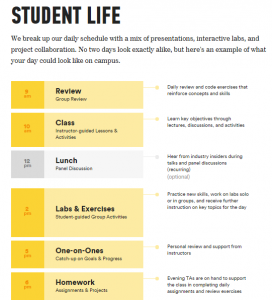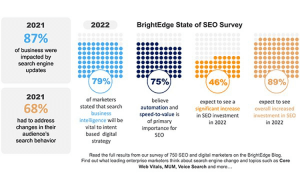What are the costs of a bad hire? Nearly everyone in business has a personal story to tell about the damage caused by someone they hired that did not perform as they expected. There are certainly many reasons for poor performance that are out of our control when we join a company, but bad hires are all too common when I talk to prospective clients. Many CEOs have a vision in mind for the types of people they want to work with, but things can sometimes break down on the execution of that vision. Finding and retaining good talent is more than finding a good recruiter or having a good compensation package. Attracting and retaining the best of the best requires a comprehensive approach to talent management.
Below is a top line road map for having strategic discussions with the internal stakeholders in your organization. A comprehensive approach requires the buy in from many departments beyond HR. The Training, Sales, and Marketing departments are key, as is having a solid social media strategy if you are going to target younger professionals. Examine the steps below when developing a strategic planning agenda.
Ten Thousand Foot View Planning First.
Consistent and effective execution always requires planning. Talent management is no different, and it has to be comprehensive planning. One-on-one meetings with your team can be helpful, but most leaders will tell you that they don’t know everything. That’s why it is essential to get all of the stakeholders and business experts in your organization together and make some top level decisions about what you want and how you will get there. Consensus and vertical alignment must start with the top of your organization being clear about where they are going and the new talent that can help them get there.
Pre-work Required Before You Hire.
Prepare your team to accept that there is a tremendous amount of pre-work required before they post the job openings. It’s important to get everyone on the same page and reduce the likelihood of false starts. Decoding the CEOs vision into actionable data is the most essential part of this pre-work. There are several solid approaches to understanding where you want to go with talent and decoding that vision into the individual decisions you make along the way with each hiring choice. It’s essential to make a concrete tool that captures the skills, values, experience, and personality of the kind of team member you are looking for. The most enlightening portion of this profile is the subconscious characteristics around competitiveness, work ethic, and personal ego. We want to develop a profile that looks at all of the data below the tip of the iceberg, the insights that are not directly obvious by simply interviewing people.
Identify a Ring Leader
The Ring Leader keeps everyone honest and invested in the process enacted at the beginning. They are there to prevent people from forgetting the impact of the past mistakes, and hold out for the right people because the cost of hiring the wrong people can be extremely high. Managing talent can seem like a circus of epic proportion because everyone has a different opinion and various levels of investment in the importance of the task. Many HR professionals are kept awake at night by a growing list of open positions and sales managers fret over open territories. The legal department however, will recount all of the stories of staff that that they regret hiring. Bad hires create PR issues and potentially disastrous legal issues with key clients, not to mention the lack luster sales followed up by a litany of pass the buck style excuses.
Coach the Hiring Managers
We are highly dependent on front line managers for the final decision making. Outside talent consultants can bring us candidates and HR can provide help screening them, but ultimately someone will have to sit face to face with the final candidates. That person almost always is their reporting manager. This is all too often where talent management strategies can excel or fail just the same. Too many companies assume we all have the same interviewing skills and judge information consistently. That could not be farther from the truth. I have found in my experience that coaching and training front line managers will make the biggest impact and bring the most ROI of any Talent Management initiative. Bring the Ring Leader and managers into a cooperative working partnership. I would recommend managers having the final decision on who to hire, but ensure that they review the objective data collected on each candidate when making their choice. The data is what keeps us from simply choosing who smiled the most or made us laugh, and looks like people we respect.
Onboard Your New Staff Like VIPs
While I was at ConMed we overhauled the onboarding of sales people. It was a broken system and with the help of a great team of people it became a process we all became proud of. If onboarding is not optimized we run the risk of making a poor first impression on our most sought after talent. The first weeks and months will set the tone of our relationship together. Much like dating, if we have a bad first impression it can definitely impact the future potential of the time together. With that in mind, make sure you invest in making a well thought out on-boarding process using the infrastructure at your fingertips. Each company has different tools but the basics are the same. Show your new staff that you care, but also have high expectations for them. Make sure you have built in ways for them to succeed and demonstrate they are invested in the process of learning and becoming part of the organization. Use your Ring Leader to keep them accountable without becoming a helicopter parent because the goal is independence not hand holding.
Nurture, Coach, and Grow Your Talent
After the initial probationary period, make sure that you continue to invest in your new staff. It may be several months before they truly become 100% integrated and fully functioning. Mentoring can be an effective way to ensure their success. Certainly their reporting manager will have growth and production goals, but working with a mentor can bring about growth in a very different way. Many companies have implemented official and unofficial mentoring programs, and both styles can work well. Work within the corporate culture that is present already and focus on interactions that bring value to the newbies and mentors alike.
Be Decisive When Time Has Come to Part Ways
Every talent management plan must include provisions for when things don’t work out. The caveat here is that no system is perfect, but the more you trust and refine your process the better it will perform for you. We invest in good screening, onboarding, and mentoring to ultimately prevent the costly process of having to part ways with someone we had hoped would bring value and growth to our organization. That being said, a wise professional veteran told me many years ago, “hire slow and fire fast”. Companies adhere to this adage in vastly different ways, but the truth in the statement lies with the cost of delaying what is inevitable. Keeping a marginal or destructive employee around can be infinitely more costly than swiftly parting ways and investing in making better decisions in the future.
Feel free to contact me to learn more about the scenarios I discussed in this article and check out the Case Study published in Training Magazine on the ConMed OnBoarding initiative.
Business & Finance Articles on Business 2 Community(29)





